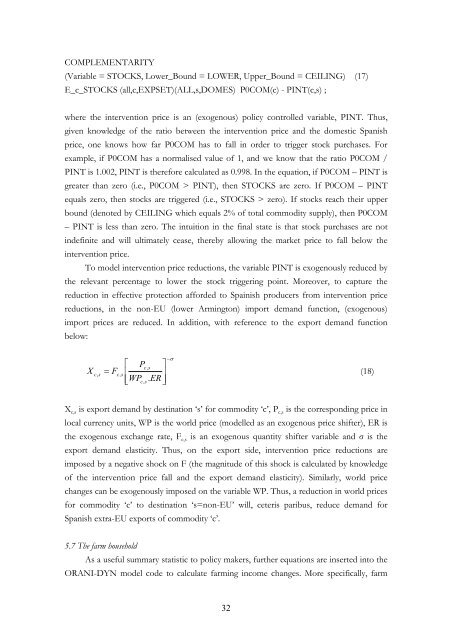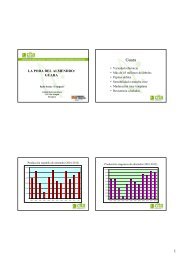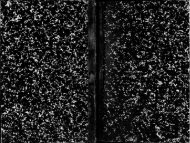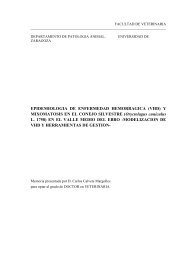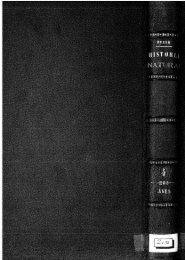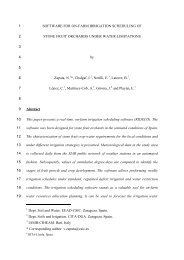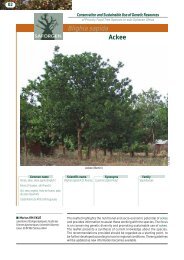1 A Recursive Dynamic Computable General Equilibrium Model For ...
1 A Recursive Dynamic Computable General Equilibrium Model For ...
1 A Recursive Dynamic Computable General Equilibrium Model For ...
You also want an ePaper? Increase the reach of your titles
YUMPU automatically turns print PDFs into web optimized ePapers that Google loves.
COMPLEMENTARITY<br />
(Variable = STOCKS, Lower_Bound = LOWER, Upper_Bound = CEILING) (17)<br />
E_c_STOCKS (all,c,EXPSET)(ALL,s,DOMES) P0COM(c) - PINT(c,s) ;<br />
where the intervention price is an (exogenous) policy controlled variable, PINT. Thus,<br />
given knowledge of the ratio between the intervention price and the domestic Spanish<br />
price, one knows how far P0COM has to fall in order to trigger stock purchases. <strong>For</strong><br />
example, if P0COM has a normalised value of 1, and we know that the ratio P0COM /<br />
PINT is 1.002, PINT is therefore calculated as 0.998. In the equation, if P0COM – PINT is<br />
greater than zero (i.e., P0COM > PINT), then STOCKS are zero. If P0COM – PINT<br />
equals zero, then stocks are triggered (i.e., STOCKS > zero). If stocks reach their upper<br />
bound (denoted by CEILING which equals 2% of total commodity supply), then P0COM<br />
– PINT is less than zero. The intuition in the final state is that stock purchases are not<br />
indefinite and will ultimately cease, thereby allowing the market price to fall below the<br />
intervention price.<br />
To model intervention price reductions, the variable PINT is exogenously reduced by<br />
the relevant percentage to lower the stock triggering point. Moreover, to capture the<br />
reduction in effective protection afforded to Spainish producers from intervention price<br />
reductions, in the non-EU (lower Armington) import demand function, (exogenous)<br />
import prices are reduced. In addition, with reference to the export demand function<br />
below:<br />
X<br />
= F<br />
⎡ P ⎤ c,<br />
s<br />
⎢ ⎥<br />
⎢⎣<br />
WPc<br />
, s.<br />
ER⎥⎦<br />
−σ<br />
c,<br />
s c,<br />
s<br />
(18)<br />
Xc,s is export demand by destination ‘s’ for commodity ‘c’, Pc,s is the corresponding price in<br />
local currency units, WP is the world price (modelled as an exogenous price shifter), ER is<br />
the exogenous exchange rate, Fc,s is an exogenous quantity shifter variable and σ is the<br />
export demand elasticity. Thus, on the export side, intervention price reductions are<br />
imposed by a negative shock on F (the magnitude of this shock is calculated by knowledge<br />
of the intervention price fall and the export demand elasticity). Similarly, world price<br />
changes can be exogenously imposed on the variable WP. Thus, a reduction in world prices<br />
for commodity ‘c’ to destination ‘s=non-EU’ will, ceteris paribus, reduce demand for<br />
Spanish extra-EU exports of commodity ‘c’.<br />
5.7 The farm household<br />
As a useful summary statistic to policy makers, further equations are inserted into the<br />
ORANI-DYN model code to calculate farming income changes. More specifically, farm<br />
32


